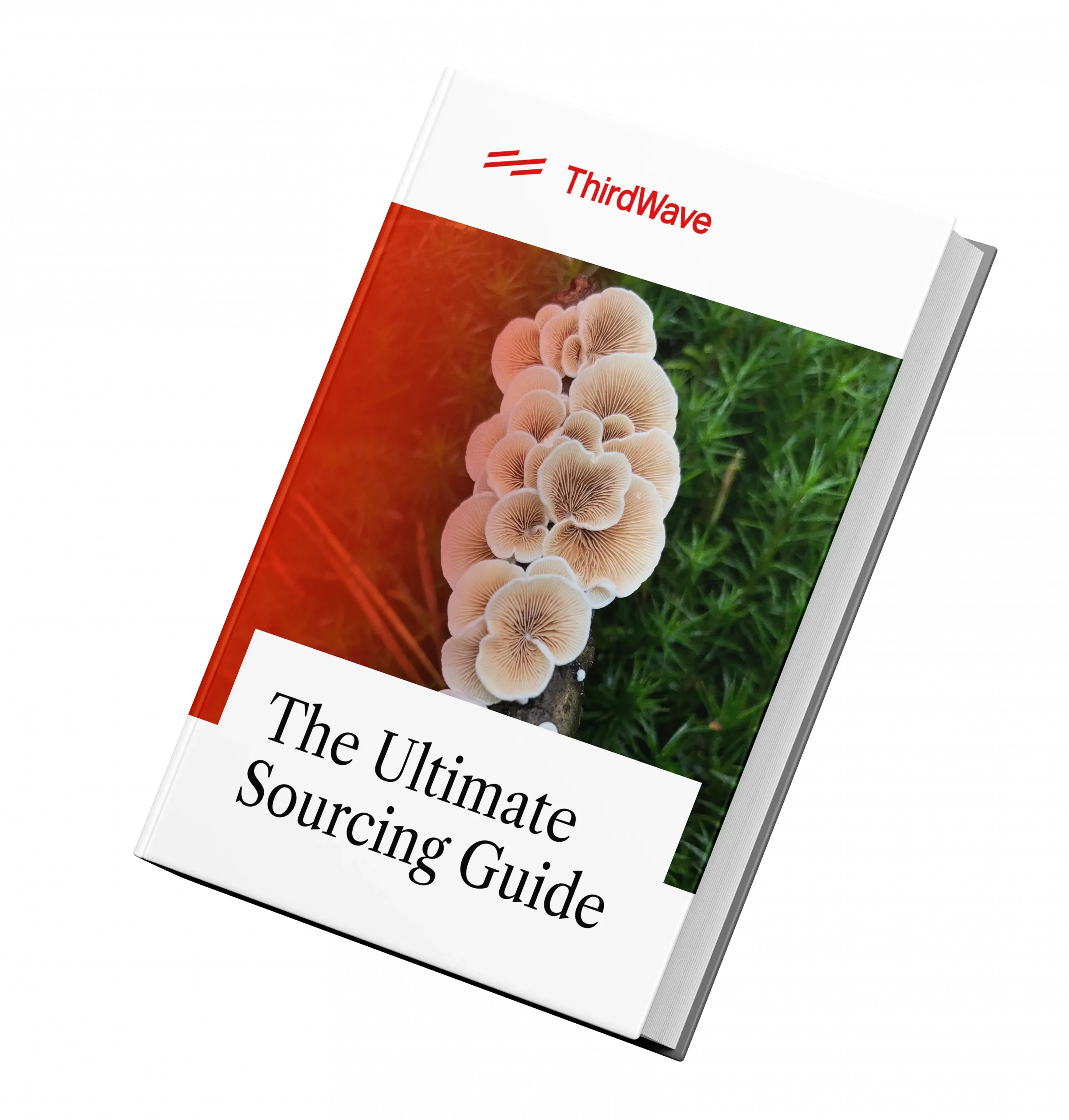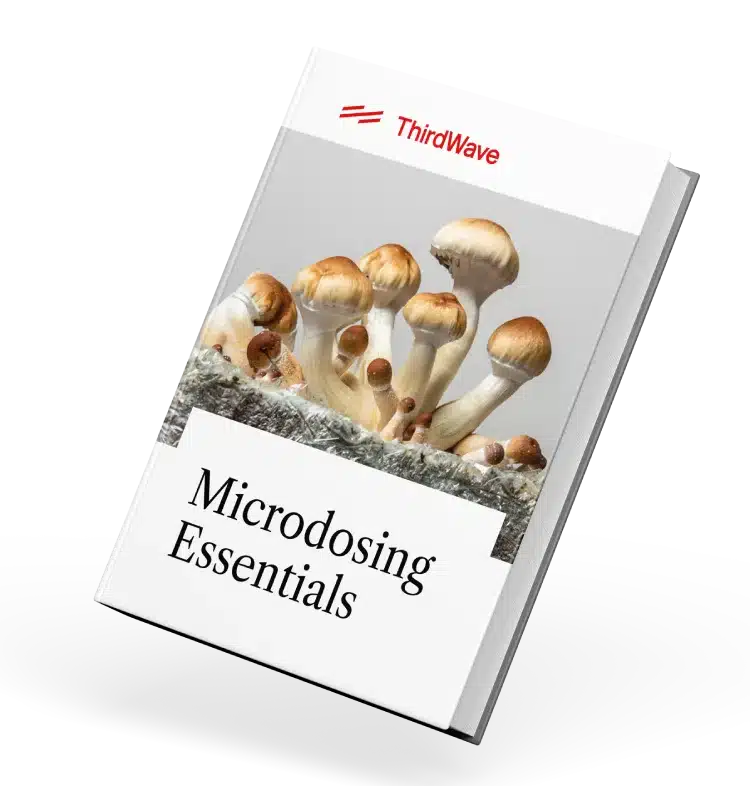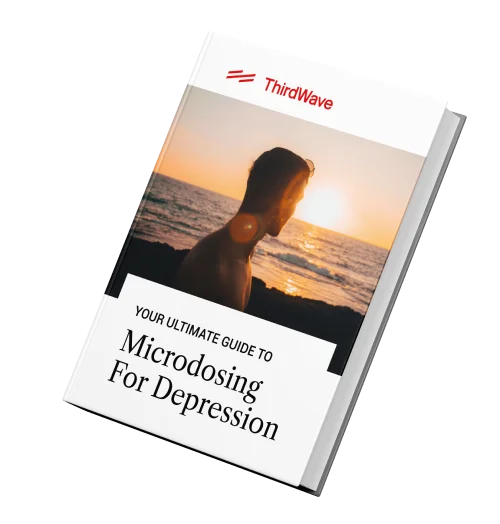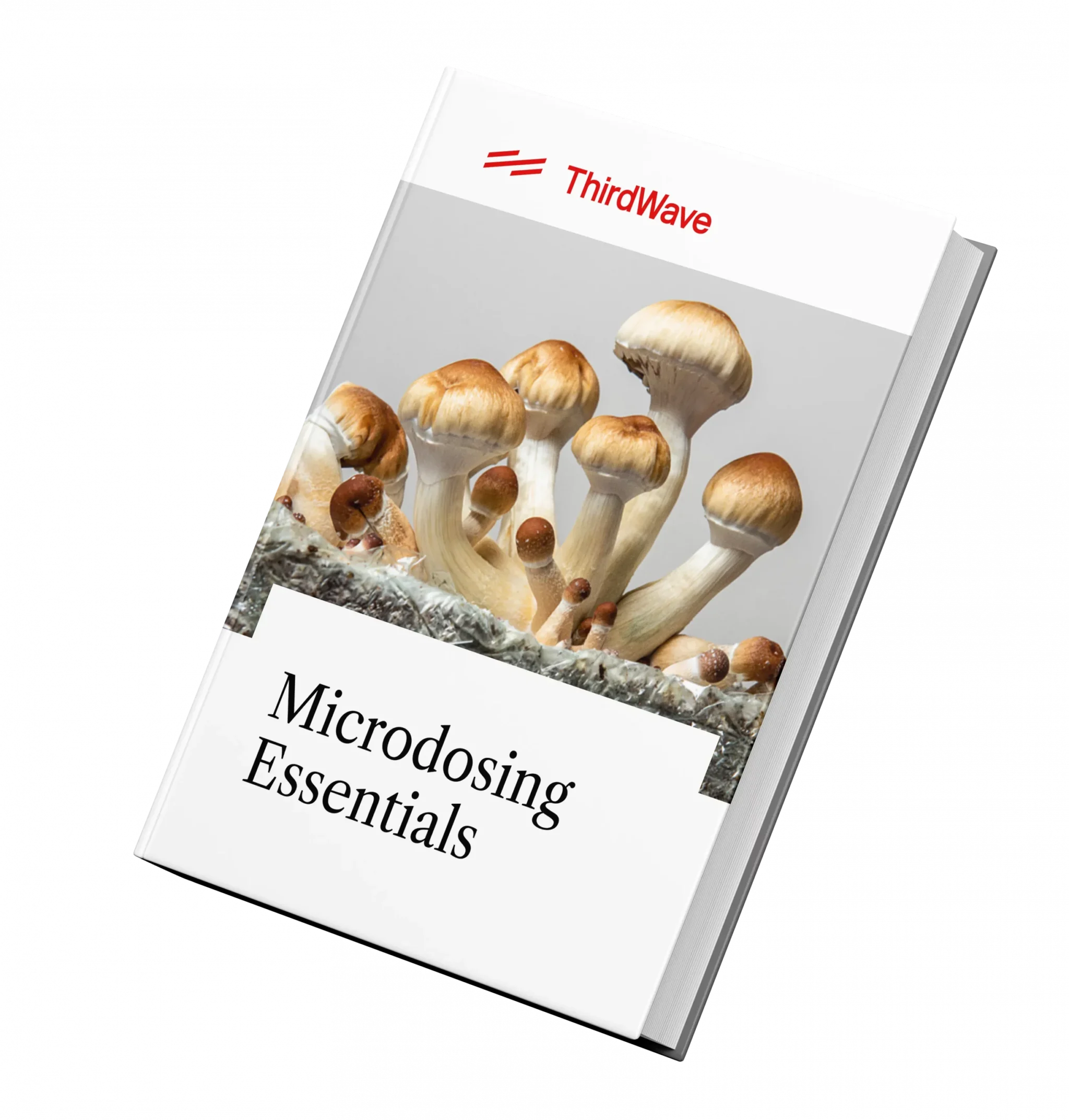The Ultimate Guide to
Ketamine
(K, Ket, Special K, Vitamin K, Lady K)
Ketamine is a potentially illegal substance, and we do not encourage or condone the use of this substance where it is against the law. However, we accept that illegal drug use occurs, and believe that offering responsible harm reduction information is imperative to keeping people safe. For that reason, this guide is designed to ensure the safety of those who decide to use the substance.
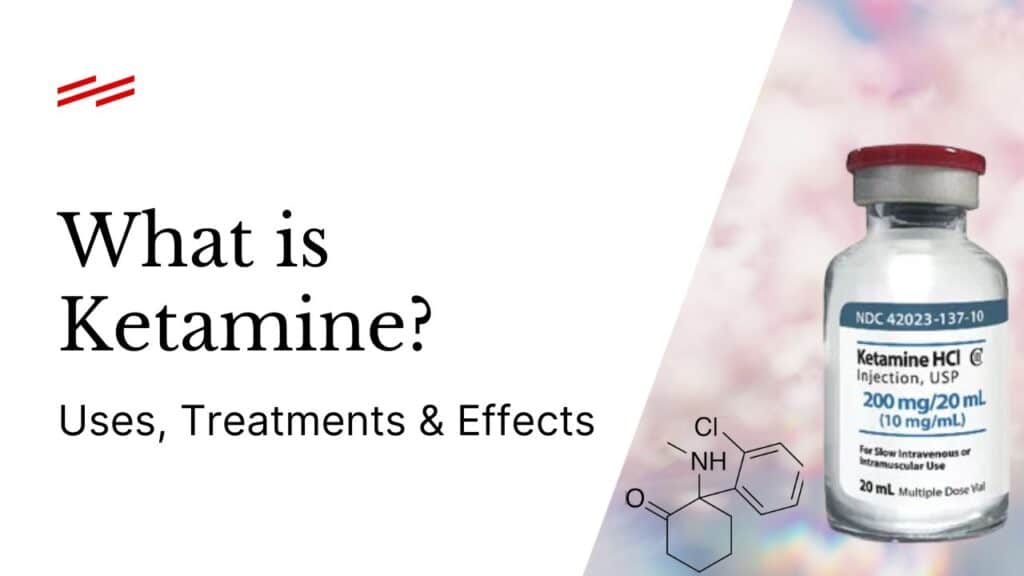
Overview
01Ketamine is known for acting fast and effectively. A 2006 study from the National Institute of Mental Health found that 18 people who used the drug reported a drastic shift in mood within hours. Though it’s not known exactly how ketamine works, experts believe the drug could repair damaged synapses—or connections–in the brain, which are worn down by stress and depression.
Despite its benefits, ketamine remains a controlled substance in the United States and many other countries.
In Third Wave’s Ultimate Guide to Safely Sourcing Psychedelics, you will discover an astonishing menu of psychedelic medicines… In Third Wave’s Ultimate Guide to Safely Sourcing Psychedelics, you will discover an astonishing menu of psychedelic medicines… Beyond LSD and Psilocybin is a field. This guide will take you there.
…and how to source them without legal risk. Beyond LSD and Psilocybin is a field. This guide will take you there.
…and how to source them without legal risk.
Experience
02What to expect
At lower doses, ketamine may cause numbness, a tingling body high (especially in the hands, feet, and head), jerky movements, rapid breathing, and dizziness. These effects are often accompanied by euphoria, relaxation, a feeling of weightlessness, mild visuals, and blurred or roving vision. Users may also experience introspective thoughts and enhanced appreciation for music.
At higher doses, visual, auditory, and even gustatory (taste-oriented) hallucinations are common, with some reporting a metallic flavor in the mouth. Hallucinations may be extremely realistic, including conversations with friends who aren’t there. [1][2][3]
At high doses, awareness of the physical environment and body dissolves. Out-of-body or near-death experiences are common, as are vivid internal experiences and a distorted sense of time. A high dose starts at approximately 1.5 mg/kg injected.
There are companies like Joyous, who use a proprietary, very low-dose ketamine treatment protocol that has been shown to produce quick relief and sparked the beginning of gradual and consistent mental health improvements.
Some negative effects include paranoia, nausea, amnesia, and depersonalization—some of which may persist after frequent use. So if you’re considering a high-dose ketamine experience, it’s essential to seek medical professional support. Healing Maps is a valuable directory to help you find ketamine clinics you can trust.
Effects
03Pharmacology
Ketamine is a water-soluble PCP derivative. As a chiral molecule, it has two enantiomers: an S(+) isomer, or “esketamine,” and an R(-) isomer, or “arketamine.”[4]
In clinical use, it is available as ketamine hydrochloride in liquid or powder form for intravenous injection and is marketed under the brand name Ketalar. Esketamine, which has a slightly different molecular makeup than ketamine, was approved for use by the FDA in 2019 and is marketed under the brand name Spravato. It is administered as a nasal spray.
Receptor binding
Ketamine antagonistically binds to, or blocks, NMDA (N-methyl-D-aspartate) receptors.[5] This interaction prevents signals passing between the brain and spinal column and is responsible for the molecule’s analgesic effect. Ketamine also interacts with opioid receptors and monoamine, cholinergic, purinergic, and adrenoreceptor systems.[4]
Safety and Toxicity
Ketamine appears to be relatively safe for occasional users. However, frequent use carries the potential long-term risk of neurodegeneration. Prolonged intravenous exposure to the drug (over 9 or 24 hours) has led to brain cell death in rhesus monkeys.[6] A similar effect has been seen in neonatal rats.[7] In the monkeys’ case, however, continual exposure over a shorter period of three hours had no adverse effects.
Frequent use among people has also led to signs of cognitive impairment affecting thought and memory[8]. However, occasional users (i.e. those who take ketamine once or twice a month) have not.[9]
Schizotypal symptoms—including delusions, superstitious thinking, dissociation, and flashbacks—have also been observed in frequent users. Symptoms have also been shown to persist for some.[10][11]
Bladder pain is another common complaint among frequent users[12], often accompanied in the long term by reduced bladder volume, incontinence, passing blood in urine, and cystitis.[13] More research is needed to understand the relationship between ketamine and urological problems, but in some cases, it has been necessary to surgically remove the bladder.[14]
In 2009, there were 529 ketamine-related emergency department visits in the US—compared to 36,719 for PCP and a total of 973,591 for any illicit drug.[15] Only 12 ketamine-related deaths were recorded worldwide between 1987 and 2000, and only three involved ketamine alone. The cause of death in each case was an overdose by injection.[16] More often, ketamine-related deaths are caused by interactions with other drugs, leading to respiratory depression and cardiac arrest.[17]
Interactions with other substances
Only a limited amount of data exists around ketamine’s interaction with other drugs, whether good or bad, but it’s best to be cautious when mixing any two substances. Here’s what we do know.
Positive interactions:
- Psilocybin: Many users have anecdotally reported that mixing psilocybin and ketamine brings out the best of both drugs. Out of body experiences are common, and ketamine helps diminish any anxiety and brings on a sense of euphoria.
- LSD: LSD increases ketamine’s ability to induce out of body experiences, which could be an important part of their therapeutic effect. Some users have also reported that small amounts of ketamine can “ground” the trippier aspects of the LSD experience.
Neutral interactions:
- Cannabis: There have been no reported problems with this combination. Ketamine can amplify some cannabis effects, most notably closed-eye visuals.
- Caffeine: No known problems.
Negative interactions:
- Opioids
- Barbiturates (Amytal, Butisol, Nembutal)
- Benzodiazepines (Xanax, Klonopin, Ativan)
- Zolpidem (Ambien)
Sometimes hope comes in micro-doses. This guide will walk you through the process and how to best use the healing potential of psychedelics in a safe, intentional way to heal depression. Sometimes hope comes in micro-doses. This guide will walk you through the process and how to best use the healing potential of psychedelics in a safe, intentional way to heal depression. Get Your FREE Ultimate Guide To Microdosing for Depression.
Get Your FREE Ultimate Guide To Microdosing for Depression.
Benefits & Risks
04Potential Benefits
Though ketamine does not work for everyone, its ability to rapidly reverse symptoms of depression makes it a powerful medication compared to existing antidepressants, which can take weeks or months to begin working. Studies have also shown that ketamine works for patients who have failed to respond to multiple other treatments.
Though we don’t know for sure why ketamine works so well, the leading theory is that the drug stimulates the regrowth of synapses (connections between neurons), effectively rewiring the brain. This is a very different function than existing antidepressants. Rather than affecting one of the “monoamine” neurotransmitters, such as serotonin or dopamine, ketamine acts on glutamate, which is the most common chemical messenger in the brain. Glutamate plays an important role in the synapses involved in learning and memory, which is why researchers believe neuroplasticity could be central to ketamine’s antidepressant effects.
Risks
Ketamine is considered a relatively safe drug when taken in medical settings. Unlike other anesthetic medications, ketamine does not affect the protective airway reflexes and doesn’t depress the circulatory system, which makes it a safer option.
However, there are some things to look out for. Ketamine can cause an increase in blood pressure and intracranial pressure or pressure in the brain. That means people with brain swelling, glaucoma, and brain lesions or tumors should not use ketamine. People with coronary artery disease, high blood pressure, thyroid disease, alcoholism, and aneurysms should also exercise caution when using ketamine.
Long term use of ketamine can also cause issues in creating new memories, accessing old memories, short-term memory, visual memory, and verbal recall (such as forgetting words, names, and conversations). It can also cause serious damage to organ systems, especially the bladder, kidneys, and heart. People who take large doses of ketamine may experience respiratory distress, rapid heart rate, and seizures.
Therapeutic Use
05While it doesn’t work for everyone, ketamine’s success rate of 85% is almost double that of traditional antidepressants (45%).[19] It’s also highly effective in patients with treatment-resistant depression, even if their symptoms have persisted for decades without relief.[20] Furthermore, it shows great promise in quickly and reliably eliminating suicidal thoughts, essentially making ketamine the first emergency “anti-suicide” drug.[21] When administered as an intranasal spray, ketamine’s antidepressant effects may last up to 30 days from a single dose.[22]
A highly important but still under-researched aspect of ketamine treatment is the effective dosage. It produces numerous side effects (even at subanesthetic dosage levels), so it’s important to administer the optimal quantity.
A recent study tested four different dosage levels on patients with treatment-resistant depression: 0.1, 0.2, 0.5, and 1 mg of intravenous ketamine per kg of body weight. They found that single doses of 0.5 and 1 mg/kg were significantly more effective than an active placebo in reducing depression symptoms over a three-day period.
However, after monitoring the patients for 30 days, the results showed that there was “little evidence of meaningful therapeutic benefit after day 5.” At 1mg/kg, the effects of the drug lasted between 15 and 30 days, but the researchers noted that the effects were modest.
While some researchers hope for a non-psychedelic form of ketamine[23][24], others consider its unique psychedelic effects to be crucial for treatment. Ketamine psychedelic therapy (KPT), for instance, takes advantage of ketamine’s dissociative state to address the underlying psychology of addiction. Companies like MindBloom, which are opening ketamine clinics across the US, believe that the psychedelic effects are central to their treatments.
A study in 1997 found that ketamine therapists were able to imprint drug addicts and alcoholics with new beliefs and memories about substance abuse, effectively creating a strong inner taboo to prevent relapse. One year after treatment, approximately 66% of chronic alcoholic patients remained sober, compared to just 24% of chronic alcoholic patients in conventional treatments.[25]
Following treatment, KPT patients also identified more strongly with positive self-images and values than before they started. Of particular note was their newfound sense of meaning or purpose, which was likened to a spiritual or religious conversion.
More recent studies have linked KPT-assisted recovery to ketamine’s antagonism (blocking) of NMDA receptors, destabilizing, and even erasing memories that reinforce drinking.[26][27] Ketamine also activates the limbic system (associated with memory, emotion, and behavior), which suggests a strengthened interaction between the conscious and subconscious levels of the mind.[25]
KPT has also helped heroin addicts stay sober after rehab. Those given regular KPT sessions were far less likely to use heroin again than those who received counseling alone.[28]
Based on more than a decade (1985-1997) of administering KPT to patients, researchers found it was also effective at treating avoidant personality disorder (social inhibition, over-sensitivity, feelings of inadequacy, etc.) and neurotic-reactive depression (i.e. depression arising from specific life events or circumstances), as well as PTSD.[25] Ketamine’s antidepressant and PTSD benefits likely result from its ability to modulate glutamate neurotransmission and promote neuroplasticity.
Other psychotherapeutic applications of ketamine’s dissociative effect include regression, ego-dissolution, and group healing ceremonies.[29]
If you would like to experience ketamine in a legal, therapeutic environment, Third Wave has created its own psychedelic provider directory for you to find curated ketamine clinics and KAP therapists. All clinics listed have either been verified or rigorously vetted by the Third Wave team, so you can feel confident knowing that these clinics are worth considering in this vulnerable and transformative experience.
Personal Growth
06Famed physician, neuroscientist, psychoanalyst, and psychonaut John C. Lilly, M.D., was enthusiastic about what he called the “emergent state” on ketamine, more commonly known as the “K-hole.” In this state, he said, time slows to the point of becoming meaningless, which makes issues easily available for analysis—removed from personal involvement, objectively examining one’s ego, behavior, and motivations becomes easier. Lilly also recommended a practice he called “metaprogramming,” which involved experimenting with different personality traits while in this emergent state to see their consequences before deciding to adopt them for good. [31]
Ketamine has also been found to increase people’s compassion and sensitivity to others, as well as reduce the fear of death and increase joy in living.[32]
Legality
07Since esketamine became FDA-approved, countless ketamine therapy clinics have emerged to administer off-label infusions for treatment-resistant depression. If you’re feeling called to experiment with this substance, Healing Map’s ketamine clinic directory can help you locate a qualified center.
In the UK, Ketamine is a Class B substance, the same category as cannabis, codeine, and most amphetamines. Possession is punishable by up to five years in prison.[35]
Ketamine is also illegal in Canada, Australia, and New Zealand. Most countries, including Brazil, restrict the drug to veterinary use, while others permit it for humans on prescription. Very few countries allow it to be sold over-the-counter.[36]
History & Stats
08Recreational use began around 1965 and became internationally prevalent by the mid-1970s. During this period, psychedelic researchers such as John C. Lilly, Marcia Moore, Stanislav Grof, and D. M. Turner explored ketamine’s psychotherapeutic potential. It was also used by Vietnam veterans with PTSD, having been the field anesthetic of choice during the war. Lilly referred to the drug as “Vitamin K” and once took it for 100 days straight. [39] Grof found it useful and integrative for therapy with LSD.[29]
In the 1980s, ketamine’s popularity shifted to the rave culture of Ibiza and Goa. It was a cheaper alternative to another up-and-coming “club drug,” MDMA.
In 1981, the DEA filed a notice of intention to place ketamine in Schedule III of the Controlled Substances Act, but evidence of actual abuse was scarce and did not support the designation. In 1995, the drug was added to the agency’s “emerging drugs list” and finally labeled Schedule III in 1999, making it illegal to possess without a prescription. As a result, it was commonly stolen from hospitals or smuggled from overseas.[37]
Current use
Although it’s a controlled substance in most of the Western world, ketamine is widely used both in medicinal and recreational purposes. Ketamine infusion clinics have opened across the world, and its promising results as a treatment for depression is causing its medical popularity to rise.
Curious about supporting your mental health through ketamine? Check out Third Wave’s vetted directing of ketamine clinics and ketamine assisted psychotherapy therapists in the US.
Medicinal use
Thanks to its unique pharmacological properties and a growing body of evidence of its clinical benefits, ketamine has withstood the test of time as a medical practice.
Research increasingly shows ketamine’s potential as a treatment for severe depression, the drug is seeing a resurgence in acceptance and use.
Non-medicinal use
According to the 2016 Global Drug Survey of roughly 100,000 respondents who use (mostly illicit) psychoactive substances, ketamine was among the top ten used worldwide. It had a global past-year prevalence of 6.72%—compared with 11.75% for psilocybin and 12.89% for LSD.[40]
In 2006, people between the ages of 18 and 25 were most likely to use ketamine in the U.S., at a rate comparable to PCP. An estimated 2.3 million people aged 12 or older had used ketamine at least once in their lifetimes, and around 203,000 had used it in the past year.[41] Between 2000 and 2011, the rate of ketamine use among U.S. high school students steadily declined, never reaching more than 2.6%.[42]
Ketamine is reported to be around five times more prevalent in the UK than in the US. [43] Statistics from 2013 show a similar age bracket—20-24-year-olds—as the most likely group to use it. It has also been identified as one of the most likely drugs to be used in combination with other substances, with around 50% of UK users mixing it, often with alcohol.[44]
In China, one of the drug’s major manufacturing centers, ketamine has seen a dramatic rise in popularity. In part, this is due to its low production cost.[45]
Download our FREE guide to learn how to begin a microdosing regimen, calibrate your dose level, and get the most out of your experience. “This FREE Guide was just what I needed to take the first step into Microdosing. AND IT WAS THE BEST DECISION OF MY LIFE! After starting my microdosing regiment I now have more focus, energy and clarity into what it is I truly want in this world.” Download our FREE guide to learn how to begin a microdosing regimen, calibrate your dose level, and get the most out of your experience. Everything you need to know about Microdosing in one place
James, New York Everything you need to know about Microdosing in one place
Myths
09“Ketamine is a cat or horse tranquilizer and not suitable for human consumption”
A common misrepresentation by the media, this myth gives the impression that ketamine use in humans is somehow deviant. But despite its wider use in veterinary medicine, ketamine was originally devised for and tested on humans.[37] Nowadays, it’s perhaps the most effective therapy for treatment-resistant depression, while remaining one of our most reliable anesthetics. In fact, it’s one of only two injected general anesthetics listed on the World Health Organization’s Model List of Essential Medicines—a core list of “the most efficacious, safe and cost-effective medicines for priority conditions.”[46]
“Ketamine makes you psychotic”
Ketamine will not cause psychosis in someone who doesn’t have a prior history of a psychotic disorder like schizophrenia. The drug does induce a dissociative state, which can cause disorienting changes in perception. However, these are temporary and end shortly after the drug wears off.
“Ketamine is highly addictive”
Ketamine does not cause physical dependence, but some people become psychologically dependent based on how it makes them feel. However, in a supervised medical setting, addiction has not been reported. In fact, ketamine is considered less addictive than a cup of coffee.
FAQ
10Where can I find legal ketamine clinics?
To support your journey with experiencing ketamine legally, we’ve curated, verified, and vetted legal ketamine clinics along with KAP therapists in our psychedelic provider directory; maybe you can find the right one for you.
Can ketamine be detected in a drug test?
Ketamine isn’t usually tested for, but it may be included in some extended screens. Because of its chemical similarities to PCP, it may also trigger a false positive. Ketamine itself stays in your system for 2-4 days, and it’s detectable in your urine throughout this period. However, tests looking for ketamine specifically will detect norketamine (the major metabolite) in blood and urine for up to 14 days, or longer in frequent users.[47]
Is there a way to work with ketamine in the comfort of my own home?
Yes! We’ve partnered with Joyous, who offers a very low-dose ketamine treatment plan as a subscription to “help people thrive, not just survive.” Those who subscribe will receive daily guidance and personalized recommendations on how to optimize your treatment through our Joyous Care Navigator.
Can I test my ketamine to see if it’s safe to take?
Testing your ketamine is always good practice even when you trust your supplier. Reagent test kits from Bunk Police can identify hundreds of adulterants and substitutes, offering peace of mind and potentially saving your life.
Methoxetamine (MXE), for example, may be risky when mis-sold as ketamine. The Mandelin reagent can help to rule it out. Simply place a tiny amount of ketamine into a sterile test tube or onto a sterile white ceramic surface and add a few drops of the reagent. Then check the color change (or lack thereof) against the supplied spectrum booklet.
Can ketamine cause psychological trauma?
Frequent users may notice long-term cognitive impairments but occasional users tend not to. In any case, symptoms like perceptual distortion, memory loss, and delusional thinking are likely to fade over time. Nonetheless, it’s easy to feel “crazy” in the dissociative state itself, which is known as “acute psychosis” and sometimes referred to as “bad trips.” As with any psychedelic, set and setting are important.
How long does ketamine last?
When used intranasally, ketamine lasts for up to an hour. It can last up to two hours when ingested.
What does ketamine feel like?
Ketamine induces a disassociative state as well as feelings of euphoria, pain relief, and both visual and auditory hallucinations.
What does ketamine look like?
Ketamine is a white crystal that is usually crushed into a powder.
Are there risks?
While overdose fatalities are rare, there are certain risks involved. As a general anesthetic, ketamine heavily impairs physical movement and people have been known to drown or otherwise injure themselves as a result. Serious injuries may go unnoticed and therefore untreated because of the analgesic effect. Long-term health risks are associated with frequent use.
What is the safest way to take ketamine?
Some users prefer intramuscular injection because snorting can lead to blocked nostrils and watery eyes. Injection tends to be more intense, which is a plus for some users but a minus for others. Muscle pain is also common when injecting, especially with lower gauge needles. Intravenous injection is rare among recreational users, as is oral use, perhaps because of the unpleasant taste.
Can I use ketamine to microdose?
A mood enhancement effect has been noticed, particularly among sufferers of depression, with sub-perceptual doses of up to 0.2 mg/kg. However, ketamine is not considered safe for microdosing at the same rate as LSD or psilocybin.
Further information on microdosing with ketamine can be found here.
Does ketamine produce tolerance?
Tolerance builds up slowly, often over a period of weeks with regular use.
Is ketamine addictive?
You can easily form a psychological habit of taking ketamine if it’s readily available. Although there’s no risk of physical addiction, it’s a good idea to set personal limits to avoid habituation.
What are the side effects of ketamine?
Common side effects of ketamine include elevation in heart rate and blood pressure, confusion, disorientation, dissociation, loss of coordination, agitation, nausea, bad hallucinations, flashbacks, and tremors or shaking.
Less common side effects include depression in heart rate and blood pressure, seizures, and laryngeal spasms which can lead to suffocation.
Side effects of high doses of ketamine include chest pain, drastic changes in blood pressure, arrhythmia, amnesia, coma, fever, hallucinations of terrors, severe panic and anxiety, muscle rigidity, and respiratory depression (especially if combined with substances that act as CNS depressors.
A side effect of chronic abuse of ketamine is kidney toxicity.
Can I overdose on ketamine?
Although deaths from ketamine overdose exclusively are not very likely to happen, the settings in which ketamine is consumed are usually supportive of simultaneous substance ingestion, which is more likely to cause a tragic outcome. Ketamine is also more potent than cocaine or speed, which are used, and can be procured in similar contexts. It is unforgiving when it comes to misdosing.
Can I mix it with other drugs?
Ketamine should never be mixed with drugs that depress breathing. These include alcohol, GHB/GBL, opioids, and tramadol. Doing so increases the risk of unconsciousness and choking (e.g. on vomit). Benzodiazepines, MAOIs, amphetamines, and cocaine are also risky in combination with ketamine. While the drug appears to be safe with LSD, MDMA, and cannabis, among others, combinations are generally advised against. Find out more here.
Can I get a prescription for ketamine?
You may be able to get a prescription for ketamine to treat depression from your doctor, depending on the state you live in. Check out our review of Mindbloom to explore whether ketamine can be delivered to your home for treatment. If you’re interested in working with Mindbloom, use code “thirdwaveishere” to receive $50 off services.
Footnotes
11[1] Jansen, K. (2004). Ketamine: Dreams and Realities. Sarasota, FL: MAPS. Retrieved from: https://amzn.to/2BBI9Mj.
[2] Erowid. (2007). Ketamine Effects. Retrieved from: https://erowid.org/chemicals/ketamine/ketamine_effects.shtml.
[3] PsychonautWiki. Ketamine. Retrieved from: https://psychonautwiki.org/wiki/Ketamine.
[4] Kurdi, M. S., Theerth, K. A., Deva, R. S. (2014). Ketamine: Current applications in anesthesia, pain, and critical care. Anesthesia Essays and Researches, 8(3), 283-290. Retrieved from: https://www.ncbi.nlm.nih.gov/pmc/articles/PMC4258981/?report=printable.
[5] Mion, G., Villevieille, T. (2013). Ketamine pharmacology: an update (pharmacodynamics and molecular aspects, recent findings). CNS Neuroscience & Therapeutics, 19(6), 370-80. Retrieved from: https://www.ncbi.nlm.nih.gov/pmc/articles/PMC6493357/pdf/CNS-19-370.pdf.
[6] Zou, X. et al. (2009). Prolonged exposure to ketamine increases neurodegeneration in the developing monkey brain. International Journal of Developmental Neuroscience, 27(7), 727-731. Retrieved from: https://onlinelibrary.wiley.com/doi/abs/10.1016/j.ijdevneu.2009.06.010.
[7] Yan, J., Huang, Y., Chen, J., Jiang, H. (2014). Repeated administration of ketamine can induce hippocampal neurodegeneration and long-term cognitive impairment via the ROS/HIF-1α pathway in developing rats. International Journal of Experimental Cellular Physiology, Biochemistry, and Pharmacology, 33(6), 1715-32. Retrieved from: https://www.karger.com/Article/Pdf/362953.
[8] Morgan, C. J., Riccelli, M., Maitland, C. H., Curran, H. V. (2004). Long-term effects of ketamine: evidence for a persisting impairment of source memory in recreational users. Drug and Alcohol Dependence, 75(3), 301-8. Retrieved from: https://www.sciencedirect.com/science/article/abs/pii/S0376871604000717?via%3Dihub.
[9] Reuters Health. (2009). Harmful effects seen with repeated ketamine abuse. Retrieved from: https://www.reuters.com/article/us-ketamine-abuse-idUSTRE5AJ40T20091120.
[10] Morgan, C. J., Monaghan, L., Curran, H. V. (2004). Beyond the K-hole: a 3-year longitudinal investigation of the cognitive and subjective effects of ketamine in recreational users who have substantially reduced their use of the drug. Addiction, 99(11): 1450-61. Retrieved from: https://onlinelibrary.wiley.com/doi/abs/10.1111/j.1360-0443.2004.00879.x?sid=nlm%3Apubmed.
[11] Freeman, T. P. et al. (2009). Superstitious conditioning as a model of delusion formation following chronic but not acute ketamine in humans. Psychopharmacology, 206(4): 563-73. Retrieved from: https://link.springer.com/article/10.1007/s00213-009-1564-x.
[12] Mak, S. K. et al. (2011). Lower urinary tract changes in young adults using ketamine. The Journal of Urology, 186(2), 610-4. Retrieved from: https://www.auajournals.org/doi/10.1016/j.juro.2011.03.108.
[13] Niesters, M., Martini, C., Dahan, A. (2014). Ketamine for chronic pain: risks and benefits. British Journal of Clinical Pharmacology, 77(2), 357-367. Retrieved from: https://bpspubs.onlinelibrary.wiley.com/doi/epdf/10.1111/bcp.12094.
[14] Hanna, J. (2010). KLUTS: Ketamine and Lower Urinary Tract Symptoms. Erowid Extracts, 19, 12-4. Retrieved from: https://erowid.org/chemicals/ketamine/ketamine_article2.shtml.
[15] Drug Abuse Warning Network. (2009). National Estimates of Drug-Related Emergency Department Visits. Retrieved from: https://www.samhsa.gov/data/sites/default/files/DAWN2k11ED/DAWN2k11ED/DAWN2k11ED.pdf.
[16] EMCDDA. (2002). Report on the risk assessment of ketamine in the framework of the joint action on new synthetic drugs. Retrieved from: https://www.emcdda.europa.eu/system/files/publications/173/Risk3_62941.pdf.
[17] Moore, K. A., Kilbane, E. M., Jones, R., Kunsman, G. W., Levine, B., Smith, M. (1997). Tissue distribution of ketamine in a mixed drug fatality. Journal of Forensic Science, 42(6), 1183-5. Retrieved from: https://www.astm.org/DIGITAL_LIBRARY/JOURNALS/FORENSIC/PAGES/JFS14283J.htm.
[18] Brain & Behavior Research Foundation. Dr. Carlos Zarate Carries the Torch toward FDA Approval of Rapid-Acting Antidepressant. Retrieved from:
[19] Oksman, O., (2016). Depressed? Your doctor might soon prescribe ketamine. The Guardian. Retrieved from: https://www.bbrfoundation.org/content/dr-carlos-zarate-carries-torch-toward-fda-approval-rapid-acting-antidepressant.
[20] Park, A. (2016). ‘Club Drug’ Ketamine Provides Hope in Fight Against Depression. TIME. Retrieved from: https://time.com/4326167/depression-ketamine/.
[21] Insel, T. (2014). Post by Former NIMH Director Thomas Insel: Ketamine. NIH. Retrieved from: https://www.nimh.nih.gov/about/directors/thomas-insel/blog/2014/ketamine.shtml.
[22] Scutti, S. (2016). Party Drug ketamine closer to approval for depression. CNN. Retrieved from: https://edition.cnn.com/2016/08/17/health/ketamine-depression-treatment/index.html.
[23] Duman, R. S., Li, N. (2012). A neurotrophic hypothesis of depression: role of synaptogenesis in the actions of NMDA receptor antagonists. Philosophical Transactions of the Royal Society B, 361(1067). Retrieved from: https://www.ncbi.nlm.nih.gov/pmc/articles/PMC3405673/pdf/rstb20110357.pdf.
[24] Li, N. et al. (2010). mTOR-Dependent Synapse Formation Underlies the Rapid Antidepressant Effects of NMDA Antagonists. Science, 329(5994), 959-964. Retrieved from: https://www.ncbi.nlm.nih.gov/pmc/articles/PMC3116441/pdf/nihms293810.pdf.
[25] Krupitsky, E. M., Grinenko, A. Y. (1998). Ten Year Study of Ketamine Psychedelic Therapy (KPT) of Alcohol Dependence. The Heffter Review of Psychedelic Research, 1, 56-61. Retrieved from: https://www.heffter.org/wp-content/uploads/2020/04/chapter8.pdf.
[26] Devlin, H. (2017). Radical ketamine therapy could treat alcohol addiction. The Guardian. Retrieved from: https://www.theguardian.com/society/2017/jan/24/radical-ketamine-therapy-could-treat-alcohol-addiction-erase-memories.
[27] University of Exeter. Ketamine for reduction of Alcohol Relapse (KARE). Retrieved from: https://psychology.exeter.ac.uk/kare/.
[28] Krupitsky, E. M., Burakov, A. M., Dunaevsky, I. V., Romanova, T. N., Slavina, T. Y., Grinenko, A. Y. (2007). Single Versus Repeated Sessions of Ketamine-Assisted Psychotherapy for People with Heroin Dependence. Journal of Psychoactive Drugs, 39(1). Retrieved from: https://www.researchgate.net/publication/6308479_Single_Versus_Repeated_Sessions_of_Ketamine-Assisted_Psychotherapy_for_People_with_Heroin_Dependence.
[29] Browne-Miller, A. (Ed.). (2009). The Praeger International Collection on Addictions. Westport, CT: Praeger Publishers. Retrieved from: https://amzn.to/31f8QBl.
[30] Ziegler, M. (2016). Ketamine: A Transformational Catalyst. MAPS Bulletin Winter 2016, 26(3). Retrieved from: https://maps.org/news/bulletin/articles/410-bulletin-winter-2016/6470-ketamine-a-transformational-catalyst.
[31] Kent, J. (1996). The Ketamine Konundrum. Erowid. Retrieved from: https://erowid.org/chemicals/ketamine/ketamine_info3.shtml.
[32] Jansen, K. L. R. (1999). Ketamine and Quantum Psychiatry. Asylum Magazine, 11(3), 19-21. Retrieved from: https://erowid.org/chemicals/ketamine/ketamine_journal5.shtml.
[33] DEA. (2015). Drugs of Abuse. Retrieved from: https://www.dea.gov/sites/default/files/2018-06/drug_of_abuse.pdf.
[34] 21 CFR 522.1222 – Ketamine. Retrieved from: https://www.law.cornell.edu/cfr/text/21/522.1222.
[35] DrugWise. What are the UK drug laws? Retrieved from: https://www.drugwise.org.uk/what-are-the-uk-drug-laws/.
[36] Erowid. (2016). Ketamine Legal Status. Retrieved from: https://erowid.org/chemicals/ketamine/ketamine_law.shtml
[37] Jansen, K. L. R. (2001). A review of the non-medical use of ketamine: use, users and consequences. Journal of Psychoactive Drugs, 32(4), 419-33. Retrieved from: https://www.tandfonline.com/doi/abs/10.1080/02791072.2000.10400244
[38] Domino, E. F., Chodoff, P., Corssen, G. (1965). Pharmacologic effects of CI-581, a new dissociative anesthetic, in man. Clinical Pharmacology & Therapeutics, 6, 279-91. Retrieved from: https://deepblue.lib.umich.edu/bitstream/handle/2027.42/116940/cpt196563279.pdf?sequence=1&isAllowed=y
[39] Hooper, J. (1983). John Lilly: Altered States. Omni Magazine. Retrieved from: https://erowid.org/culture/characters/lilly_john/lilly_john_interview1.shtml
[40] Global Drug Survey. (2016). What we learned from GDS2016: An overview of our key findings. Retrieved from: https://www.globaldrugsurvey.com/wp-content/uploads/2016/06/TASTER-KEY-FINDINGS-FROM-GDS2016.pdf.
[41] SAMHSA. (2008). The NSDUH Report -Use of Specific Hallucinogens: 2006. Retrieved from: https://datafiles.samhsa.gov/study-publication/use-specific-hallucinogens-2006-nid15301.
[42] The University of Michigan. (2011). Monitoring the Future. Retrieved from: https://www.icpsr.umich.edu/icpsrweb/NAHDAP/studies/34409/summary.
[43] Daly, M. (2016). Why Do the British Love Ketamine So Much? Vice. Retrieved from: https://www.vice.com/en_uk/article/nnkjed/why-do-the-british-love-ketamine-so-much.
[44] ACMD. (2013). Ketamine: a review of use and harm. Retrieved from: https://assets.publishing.service.gov.uk/government/uploads/system/uploads/attachment_data/file/264677/ACMD_ketamine_report_dec13.pdf.
[45] Hatton, C. (2015). The Ketamine Connection. BBC News. Retrieved from: https://www.bbc.co.uk/news/resources/idt-bc7d54e7-88f6-4026-9faa-2a36d3359bb0.
[46] World Health Organization. (2015). 19th WHO Model List of Essential Medicines. Retrieved from: https://www.who.int/medicines/publications/essentialmedicines/EML2015_8-May-15.pdf.
[47] Erowid. (2015). Ketamine Drug Testing. Retrieved from: https://erowid.org/chemicals/ketamine/ketamine_testing.shtml.
In Third Wave’s Ultimate Guide to Safely Sourcing Psychedelics, you will discover an astonishing menu of psychedelic medicines… In Third Wave’s Ultimate Guide to Safely Sourcing Psychedelics, you will discover an astonishing menu of psychedelic medicines… Beyond LSD and Psilocybin is a field. This guide will take you there.
…and how to source them without legal risk. Beyond LSD and Psilocybin is a field. This guide will take you there.
…and how to source them without legal risk.
